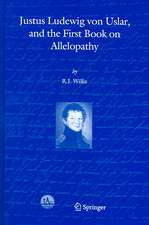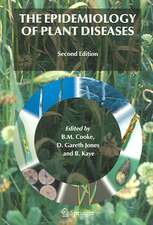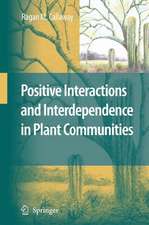Plant-Associated Bacteria
Editat de Samuel S. Gnanamanickamen Limba Engleză Hardback – 12 mai 2006
Preț: 1243.78 lei
Preț vechi: 1516.80 lei
-18% Nou
Puncte Express: 1866
Preț estimativ în valută:
238.01€ • 254.50$ • 198.44£
238.01€ • 254.50$ • 198.44£
Carte tipărită la comandă
Livrare economică 18 aprilie-02 mai
Preluare comenzi: 021 569.72.76
Specificații
ISBN-13: 9781402045363
ISBN-10: 1402045360
Pagini: 732
Ilustrații: X, 712 p.
Dimensiuni: 155 x 235 x 44 mm
Greutate: 1.19 kg
Ediția:2006
Editura: SPRINGER NETHERLANDS
Colecția Springer
Locul publicării:Dordrecht, Netherlands
ISBN-10: 1402045360
Pagini: 732
Ilustrații: X, 712 p.
Dimensiuni: 155 x 235 x 44 mm
Greutate: 1.19 kg
Ediția:2006
Editura: SPRINGER NETHERLANDS
Colecția Springer
Locul publicării:Dordrecht, Netherlands
Public țintă
ResearchCuprins
Beneficial Bacteria.- Plant-associated bacteria: survey, molecular phylogeny, genomics and recent advances.- Rhizobium-legume symbioses: molecular signals elaborated by rhizobia that are important for nodulati.- Nitrogen-fixing bacteria in non-legumes.- Epiphytic bacteria, their ecology and functions.- Bacterial endophytes: The endophytic niche, its occupants, and its utility.- Rhizosphere Bacteria.- Plant growth-promoting rhizobacteria.- Contribution of studies on suppressive soils to the identification of bacterial biocontrol agents and to the knowledge of their modes of action.- Root-associated bacteria inducing systemic resistance.- Rhizosphere competence and the role of root colonization in biocontrol.- Deleterious Rhizobacteria.- Plant Pathogenic Bacteria.- Agrobacterium biology and crown gall disease.- Clavibacter michiganensis, a group of gram-positive phytopathogenic bacteria.- The soft rot Erwinia.- Plant pathogenic Pseudomonas species.- Virulence functions of xanthomonads.- Plant pathogenic Ralstonia species.- Burkholderia.- Plant pathogenic members of the genera Acidovorax and Herbaspirillum.
Textul de pe ultima copertă
This volume is developed on the broad theme of plant-associated bacteria. It is envisioned as a resource volume for researchers working with beneficial and harmful groups of bacteria associated with crop plants. The book is divided into two parts. Part I (9 chapters) on beneficial bacteria includes chapters on symbiotic nitrogen fixers, diazotrophs, epiphytes, endophytes and rhizosphere bacteria and deleterious rhizobacteria. Part II (8 chapters) consists of detailed descriptions of 8 genera of plant pathogenic bacteria: Agrobacterium, Clavibacter, soft-rot Erwinia, Pseudomonas, Xanthomonas, Ralstonia, Burkholderia and Acidovorax & Herbaspirillum. There is an opening chapter on the plant-associated bacteria survey, molecular phylogeny, genomics and recent advances. And each chapter includes terminology/definitions, molecular phylogeny, methods that can be used (both traditional and latest molecular tools) and applications.
Caracteristici
Developed on the broad theme of plant-associated bacteria Envisioned as a resource volume for researchers working with beneficial and harmful groups of bacteria associated with crop plants Chapters include terminology/definitions, molecular phylogeny, methods that can be used (both traditional and latest molecular tools) and applications






























